When you think of plants, you may not think of them as responding to stimuli, but they do. All living things respond to external stimuli. In fact, response to external stimuli is one of the characteristics of living things. Plants produce hormones that affect different processes in the plant. There are five main classes of plant hormones.
![]() Watch the following video to learn more about what processes each of these classes of hormones affect.
Watch the following video to learn more about what processes each of these classes of hormones affect.
Source: Plant Control, Bozeman Science, YouTube
Tropism is the growth response that a living organism has toward an external stimulus. As you saw in the video above, auxins play a key role in plant tropism. There are several different types of tropisms.
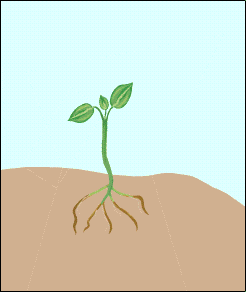
Source: Phototropism, The Virtual Astronaut
Phototropism is the plant's movement in response to light. Have you ever seen a houseplant that leans (grows) toward the window?
The plant bends toward light due to a positive phototropism response. The lack of light stimulates a reaction in the auxin hormone that generates growth on the shaded side, effectively bending the plant toward the light.
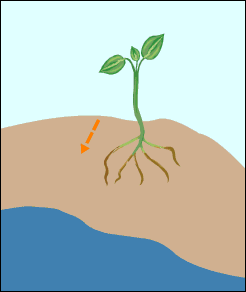
Source: Hydrotropism, The Virtual Astronaut
A plant's growth in response to water is called hydrotropism.
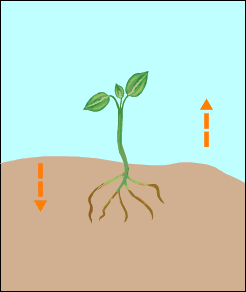
Source: Geotropism, The Virtual Astronaut
A plant's growth response to gravity is called geotropism. Geotropism is the positive or negative response to gravity. The sprout or shoot responds negatively (move away from) to gravity, while the roots respond positively.
![]() Thigmotropism is the positive or negative response to touch. An example of negative response is the twisting of the tree trunk opposite of the wind direction. Watch the video of a "sensitive plant" displaying thigmotropism.
Thigmotropism is the positive or negative response to touch. An example of negative response is the twisting of the tree trunk opposite of the wind direction. Watch the video of a "sensitive plant" displaying thigmotropism.
Source: Mimosa pudica - Sensitive Plant, Angeldaniemx, YouTube
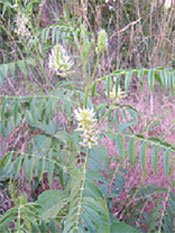
Source: flickr.com/photos/22837563@N08/2670259748 American, Licorice, Bryant Olsen, Flickr
Circadian rhythms are the natural changes a plant goes through during a 24-hour period regardless of outside influences. Examples are the opening and closing of stomata and the production of photosynthetic enzymes.
The raising and lowering of leaves in some plants like legumes are also circadian. Notice the partially closed leaves on the wild American licorice plant in the image to the left.
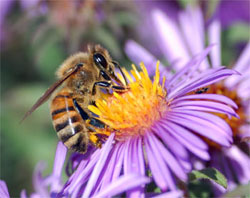
Source: European honey bee extracts nectar, John Severn, Wikimedia Commons
Plant reproduction is also guided by a biochemical feedback. Many plants have both male and female parts, but have "self-incompatibility," which means the pollen from a plant's anthers do not fertilize the plant's eggs, or self-pollinate.
A few plants have a biochemical feedback that will actually bend the stigmas down to the anthers if they haven't been fertilized by another plant's pollen in late maturity!
Now let’s practice what you have learned!
![]() Directions: Drag the responses on the right to match the prompt which indicates how a plant would respond to the stimulus given. After you complete the chart, you may print this chart or copy it on a piece of paper.
Directions: Drag the responses on the right to match the prompt which indicates how a plant would respond to the stimulus given. After you complete the chart, you may print this chart or copy it on a piece of paper.